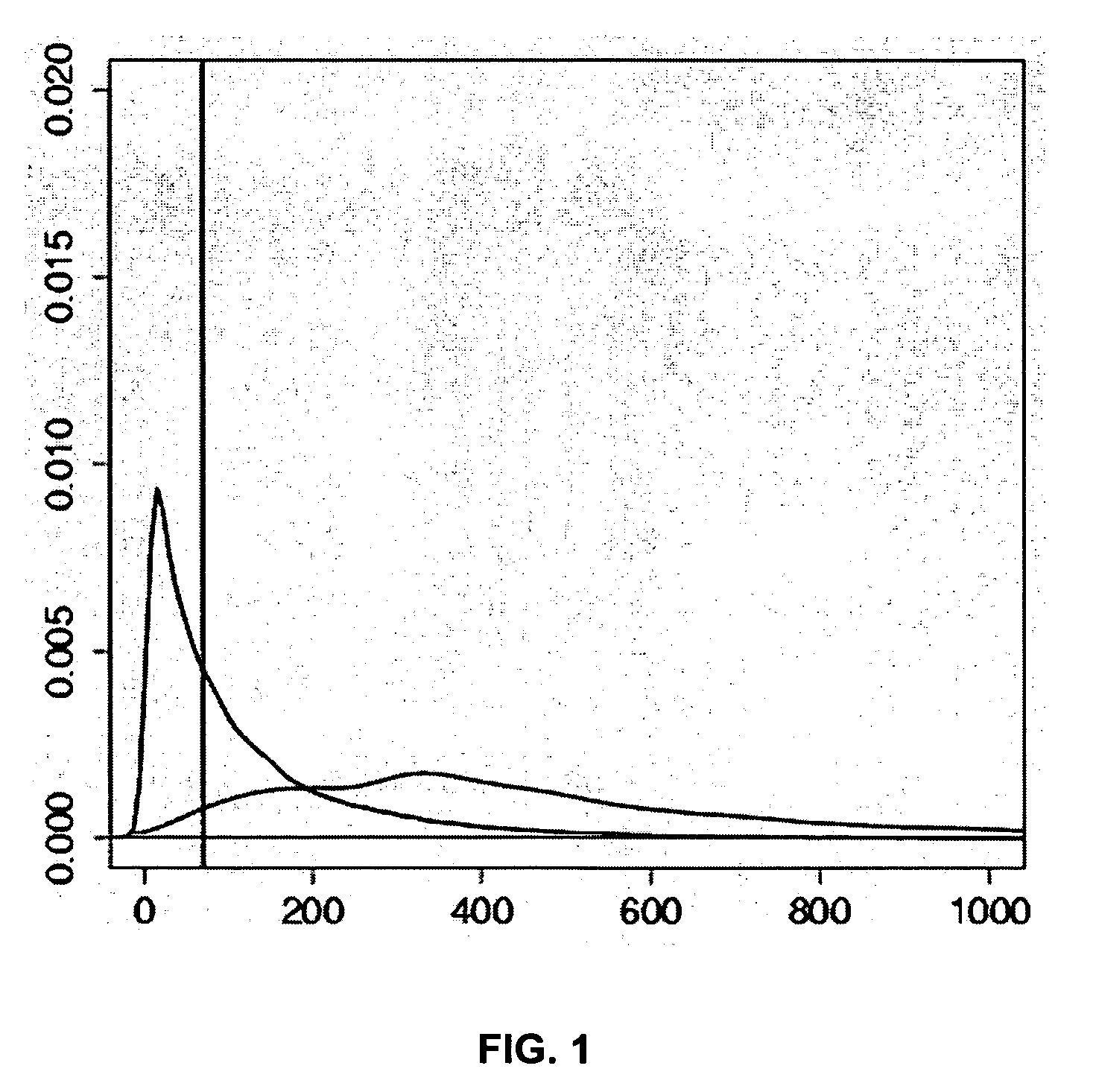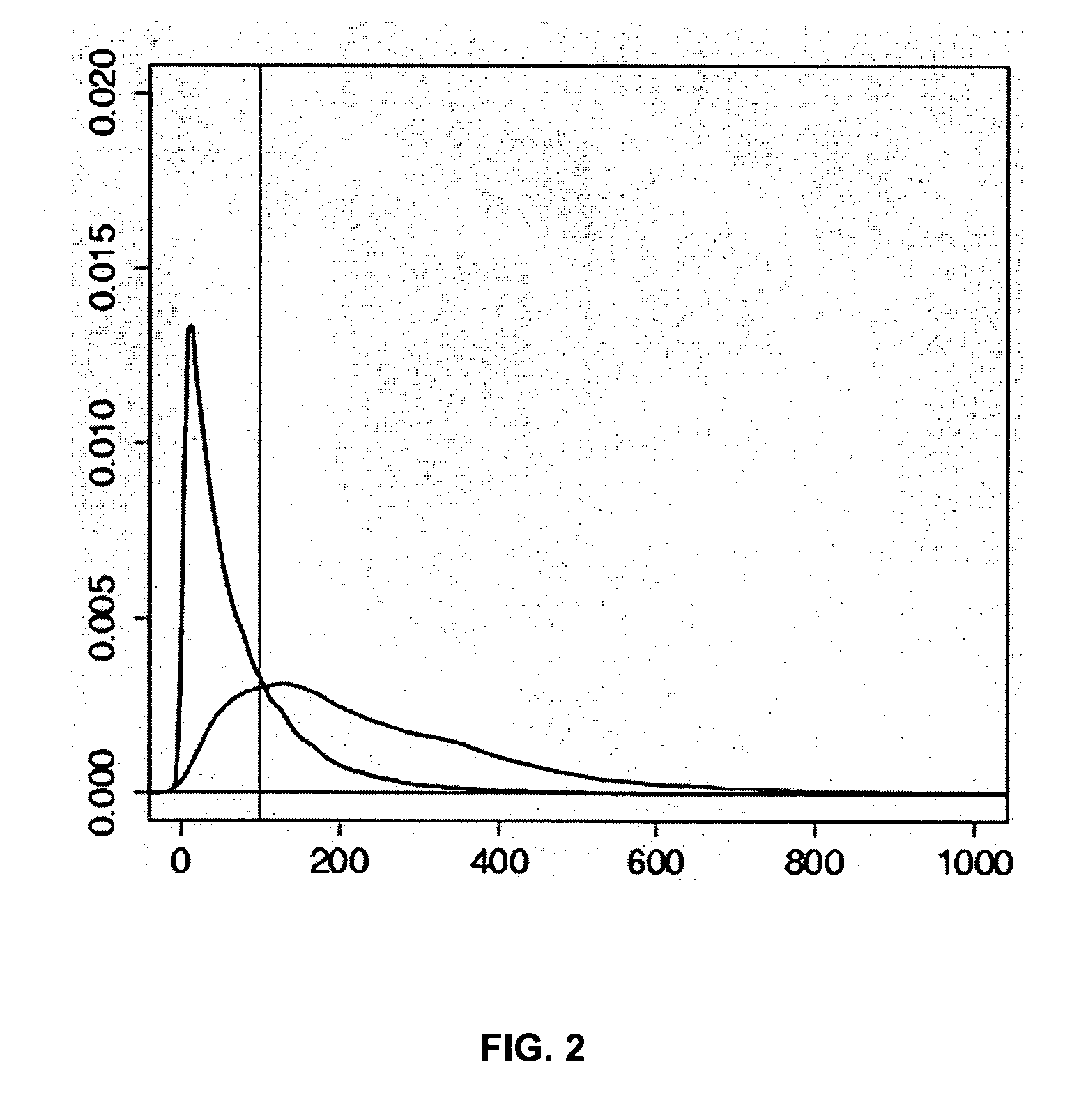Method for determining the methylation pattern of a polynucleic acid
a polynucleic acid and methylation pattern technology, applied in the direction of microbiological testing/measurement, fermentation, biochemistry apparatus and processes, etc., can solve the problems of suppressing expression, limiting the utility of dmh to general genome analysis, and relatively high production costs of cgi clone libraries. achieve the effect of effective and powerful, effectively reducing the complexity of dna fragment solutions
- Summary
- Abstract
- Description
- Claims
- Application Information
AI Technical Summary
Benefits of technology
Problems solved by technology
Method used
Image
Examples
embodiment i
[0398] A preferred embodiment comprises:
[0399] generating two types of samples of DNA fragments. each derived from a test sample and / or a reference sample;
[0400] generating the first type of sample comprising a complexity reduction of genomic DNA independent of the methylation pattern of the genomic DNA;
[0401] generating the second type of sample comprising a first methylation-non-specific restriction enzyme digestion and a second methylation-specific restriction enzyme digestion;
[0402] deducing copy-number variations by comparison of detected signal intensities of the first type of DNA fragment samples of a test sample with the detected signal intensities of the first type of DNA fragment samples of a reference sample; and
[0403] deducing methylation changes by comparison of detected signal intensities of the second type of DNA fragment samples of a test sample with the detected signal intensities of the second type of DNA fragment samples of a reference sample.
[0404] Another ...
embodiment ii
[0428] A preferred embodiment comprises:
[0429] generating two types of samples of DNA fragments each derived from a test sample and / or a reference sample;
[0430] generating the first type of sample comprising a first methylation-non-specific restriction enzyme digestion and a second methylation-specific restriction enzyme digestion;
[0431] generating the second type of sample comprising a methylation-specific restriction enzyme digestion;
[0432] deducing an alteration in DNA methylation by comparison of signal intensities of hybridizations or non-hybridizations derived form the first type of DNA fragments of the test sample with those derived from the reference sample, or by comparison of signal intensities of hybridizations or non-hybridizations derived from the second type of DNA fragments of a test sample with those derived from a reference sample, or both; and
[0433] deducing a copy-number variation by considering a comparison of signal intensity of hybridizations or non-hybrid...
embodiment iii
[0468] A preferred embodiment comprises:
[0469] generating DNA fragments derived from a test sample, a completely methylated aliquot of a reference sample and of a completely unmethylated aliquot of said reference sample by enrichment of methylated DNA;
[0470] obtaining a value represented by the quotient of the difference of the signal intensity of the test sample and the signal intensity of the completely unmethylated reference sample to the difference of the completely methylated reference sample and the completely unmethylated reference sample;
[0471] deducing that values larger than 1 represent an increase of the copy-number of the analyzed genomic region in the test sample.
A further preferred embodiment comprises:
[0472] generating DNA fragments derived from a test sample, a completely methylated aliquot of a reference sample and of a completely unmethylated aliquot of said reference sample by enrichment of unmethylated DNA;
[0473] obtaining a value represented by the quotie...
PUM
| Property | Measurement | Unit |
|---|---|---|
| volume | aaaaa | aaaaa |
| volume | aaaaa | aaaaa |
| size | aaaaa | aaaaa |
Abstract
Description
Claims
Application Information
 Login to View More
Login to View More - R&D
- Intellectual Property
- Life Sciences
- Materials
- Tech Scout
- Unparalleled Data Quality
- Higher Quality Content
- 60% Fewer Hallucinations
Browse by: Latest US Patents, China's latest patents, Technical Efficacy Thesaurus, Application Domain, Technology Topic, Popular Technical Reports.
© 2025 PatSnap. All rights reserved.Legal|Privacy policy|Modern Slavery Act Transparency Statement|Sitemap|About US| Contact US: help@patsnap.com



